There is one universal, essential step to greatly improve your trading… a master key if you will.
Most folks search high and wide for this so-called “magic bullet” to improve their trading results.
But before revealing the secret ingredient to improve your trading… let’s talk about what won’t do the trick.
I may slay a few sacred cows here, so don’t get too mad at me.
Why Technical Analysis Won’t Do Much to Improve Your Trading
Let’s just state the obvious: You CAN’T know the future. There, I said it 😉
As important as it is to read charts and get an idea of what
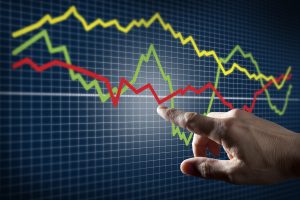
Spending more time on “technical analysis” may not improve your trading. It’s only a small piece of the puzzle.
may happen in the near future, remember the pattern you’re looking at is only an indication.
It’s not absolute truth.
Unless you have a 100% accurate system… (and if you did, there wouldn’t BE a market 😎 )… you will always have drawdowns.
Beside the occasional hiccup that stops you out of a trade that you should have stayed in… or the wrinkle that got you into a trade that you should have stayed out of… there is always the dreaded “Black Swan Event” that proffers devastating losses without any warning whatsoever.
It’s not whether or not the drawdowns will happen… it’s how your account is set up from the beginning to weather those drawdowns that’s important.
Improve Your Trading Results Regardless of The Stocks You Pick
Here’s the other thing that most traders mistakenly believe will improve their trading results: Fundamental Analysis.
Picking ‘good’ stocks to own… or shorting ‘bad’ stocks… is likewise a guessing game or you can just approach a strategy builder. I like to point out that in 2008, AAPL had a 57% LOSS… while at the same time its profits (no, not its sales… profits) went from 3.5B to 6.0B.
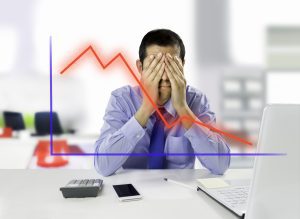
Stock making money for itself… but not YOU? Don’t despair; it isn’t too late to improve your trading results
So was Apple Computer an, ahem, “GOOD” company? Depends on who you ask. AAPL made plenty of money for itself, but the stock market version cost investors over half of their nest eggs.
So is the key to improve your trading fundamental analysis? Not if history is any kind of guide. Just because a company makes money for itself is no guarantee it will make money for YOU. Go to https://pointspromo.codes/ before you start investing on spread betting.
Perfectly ‘good’ companies can cost their shareholders dearly.
Likewise, extremely BAD companies can make money for traders in the near term… as the irrational climb of dotcom companies in the late Nineties so clearly illustrated.
Bottom line… there is something much more important and effective at work for a trader’s long-term success.
Improve Your Trading by NOT “Outsmarting” Yourself
So what is the key to improve your trading over both the long and short haul? The answer can be found in a actual case study that I’ll dramatize here.
Hopefully besides making you laugh, it’ll give you something to mull over and consider using right NOW to improve your trading:
In a landmark experiment, legendary trading coach Ralph Vince gave a virtual $1,000 to forty (40) traders.
They were given a simulated trading game that was skewed in their favor: each trader would win 60% of the time with even-money bets. BUT, just like the real world, each bet had a random chance or winning or losing so it’s possible to have some winners or losers string together in a row… but ON AVERAGE, the trades would win 60% of the time.
These traders were instructed to play for 100 times, and the only variable (paying attention?) between the participants was that they were all allowed independently to decide how much to bet on each play.
Of the forty traders, how many do you suppose lost money?
Would it surprise you to find that 95%… 38 of the 40 traders… lost money in this very winnable game?
Lest we smirk at their performance… which was demonstrably worse than any six year-old’s that can follow directions… I should mention that all 40 of these traders had high levels of education:
…they were all Ph.D’s!
Q: How do highly educated, supposedly bright people lose money… when they’re guaranteed to win 60% of the time?
A: By not exercising a tight money management, or ‘position sizing’ plan.
How Can Very Smart People Improve Their Trading?
The truth is, there IS a reliable way to improve your trading. But that way has little or nothing to do with the traditional approaches of technical or fundamental analysis…
Strangely, the master key to trading systems appears to be knowing exactly how much capital to put into each trade.
This MASTER KEY to improve your trading is called “position sizing” or “money management“.
I’m not a betting person, except when it comes to educated risks taken while trading. But if I WERE a betting man, I’d lay odds that 38 out of 40 Ph.D.’s that Ralph Vince tested had no plan at all.
Maybe some were conservative for a while… got impatient after seeing wins mount up and said, “By golly, I’m going to start betting MORE” …just in time to set themselves for a big loss. Ouch.
Or maybe others took a pretty good loss on the chin in the beginning… then got too gun-shy to ever make it back over the 100 trades.
One thing is certain:the yo-yo approach that almost every trader is guilty of being prey to can clean you out…
…EVEN when the odds are stacked in your favor!
When the ‘greed and fear’ emotions set in, they cleaned out the pockets of dang near every very bright, well-educated trader.
How Can Position Sizing Improve Your Trading?
Two of the forty traders did do well.
Now, we might just say those two were ‘fortunate’… but remember they had the exact same game as the other 38 Ph.D’s.
Just a different outcome.
The answer lies in utilizing a structured game plan for position sizing.
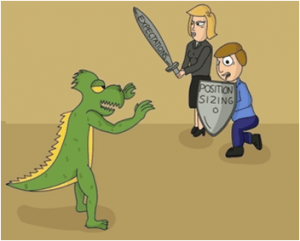
With the sword of Expectancy and the shield of optimum Position Sizing, our heroes vanquish the dreaded Martingale!
I’d guess “Benedick” was conservative and bet $10, every time. He correctly guessed that with 100 consecutive bets and $1,000 to start with… and a 60% chance of winning every time… he could not lose over the long haul.
60 wins X $10 = $600
40 losses $10 = -$400
Total won = $200, or a 20% gain on the $1000 stake.
Perhaps “Beatrice” was more aggressive. Beatrice correctly guessed she wasn’t likely to take ten losses in a row with a 60% chance of winning each time. So her bets were more aggressive at $100 each play:
60 wins X $100 = $6000
40 losses $100 = -$4000
Total won = $2000, or a 200% gain on the $1000 stake!
38 Ph.D’s managed to take a winning game and make it into a fool’s errand… But our heroes Benedick and Beatrice did well.
Simply adjusting the amount entered per play changed the long-term outcome.
Improve Your Trading by Forcing Ideal Sized Trades- F.I.S.T.
Let me point out something in the above example, in case you missed it: There was simply no opportunity here to improve your trading performance by spending time and energy on research.
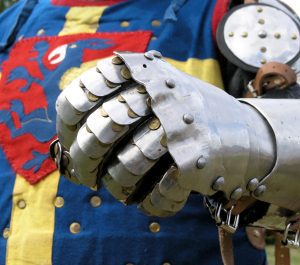
First rule of trading: DON’T LOSE. Improve your trading with an iron-fisted approach to preserving capital
No amount of fundamental or technical analysis would have improved your trading results in this game… only position sizing.
Controlling the betting size was the only variable.
Yet that one variable was the difference between bankruptcy and wild success.
Put that in your pipe and smoke it awhile…
😉
Now let’s apply what we’ve learned to your own trading experience.
To simply improve your trading, you may need to do no more or less than limit your position sizing.
But to revolutionize your trading results you’ll need to OPTIMIZE your position sizing.
In our tale of the two winners, Benedick and Beatrice… one of the traders exercised caution while the other was more aggressive.
BOTH exercised discipline, yes, by using a system for their bet sizing.
But consider Dogberry‘s result. He systematized his betting too, but with a wrinkle…
Improve Your Trading Results Further with Optimization
Dogberry wasn’t invited to Ralph Vince’s little experiment. And he definitely doesn’t fit the profile of the Ph.D! 😉
But by using ancient scroll (okay, actually this free Kelly Criterion Calculator) he simply bet the ideal amount for whatever the current odds were.
Let’s try the same play, with the same circumstances… but in this case, only bet 20% of whatever the current bankroll is.
All three players begin with a $1,000 stake.
Betting $10 each time, Benedick makes $200, or 20%. Beatrice makes $2,000, or 200%.
But Dogberry… just a simple guy following simple rules… knocks it out of the park with a $6,490 gain on top of the original $1,000!
Optimizing his bet size is what did the trick.
To the tune of a whopping 649%.
Other Tweaks to Improve Your Trading
In Dogberry’s example 20% of whatever was in the pot was the optimum bet size.
But that’s not to say that the ideal amount percent of your bankroll to wager should always be 20%.
In the sterile world of a simple, even-money bet with 60% chance of winning, the Kelly Criterion ideal position size was 20%. Actual trading is, ah… more complicated.
There are a number factors to consider: the odds of winning, the likely payouts, or (gulp) size of the losses.
All these combine to determine the expectancy of a trading system. Your expectancy then tells you how much to bet, say 27.5%, or 6.25% of your bankroll.
Some expectancies discourage you from betting at all… There are some trades you should pass on no matter how tempting the payout seems.
Failing to understanding expectancy or position sizing is the reason the most traders lose long-term.
But understand expectancy and obey optimum position sizing… and you’ll rule the world.
Improve Your Trading with Continuing Education
In a future RadioActive Trading post we’ll explore how to apply expectancy with the F.I.S.T. principle — Forcing Ideal Sized Trades — in the market, with actual trading scenarios.
- We’ll apply the Kelly Criterion to hedged positions; for example a bear put spread with a 19% payout but a 10% chance of catastrophic failure. What do we bet then? 6% of bankroll?? 40%? Or stand aside and wait for better opportunity?
- In the next post we’ll show you how to calculate Kelly for the best chance for long-term growth.
- We’ll learn how to take a plain-vanilla stock that has a 50-50 chance of winning, and use one simple trick to change its expectancy drastically in your favor.
- Using this simple hack we’ll see how this would have impacted your trading results. Would you have turned a losing year into a winner? Changed lackluster winning results into superstar status?
In the next post next Wednesday we’ll answer this poser: Ask yourself, if last year’s loss/win was the same in respects except one… that only the losing trades were changed from whatever they were to just 2-5%… would that change your results for the better?
The answers to these question and more, coming up! Awww, but look at the time! 🙁
See you Wednesday, Traders. Until then, hit us in the comments.
Oh, and if you think this article will help a friend, BE a friend. Share it on LinkedIn, Facebook, and Twitter.
Happy Trading!
Kurt
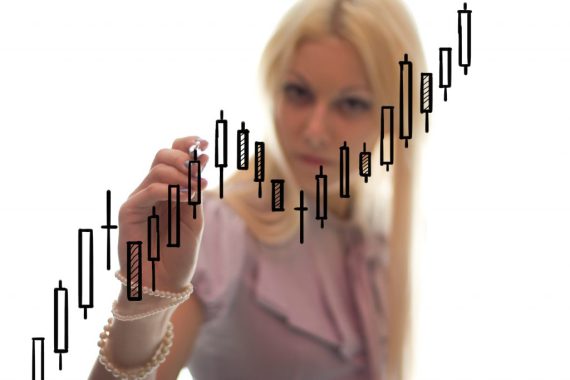
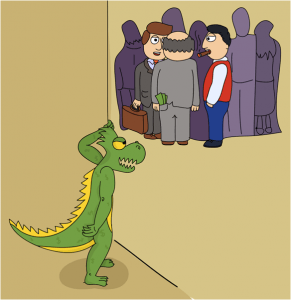
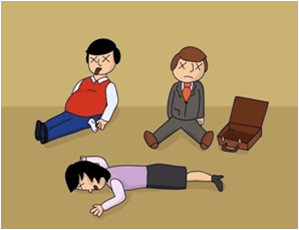
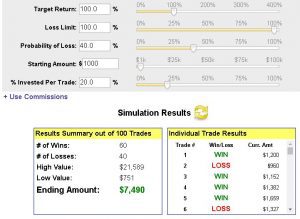
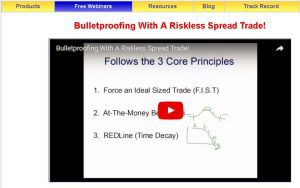
 I'm Kurt Frankenberg, and I have discovered how to truly put the odds on the side on the individual investor.
I'm Kurt Frankenberg, and I have discovered how to truly put the odds on the side on the individual investor.
[…] last Wednesday’s post we saw how sometimes a “winning” trading system can end up losing real money, just by ignoring […]
[…] can you trade with the so-called winning “edge”? In this final installment of this 3-part series, we answer this question. In just six minutes, this step-by-simple-step procedure will give your […]
[…] Post One: Improve Your Trading with One Simple Tweak […]